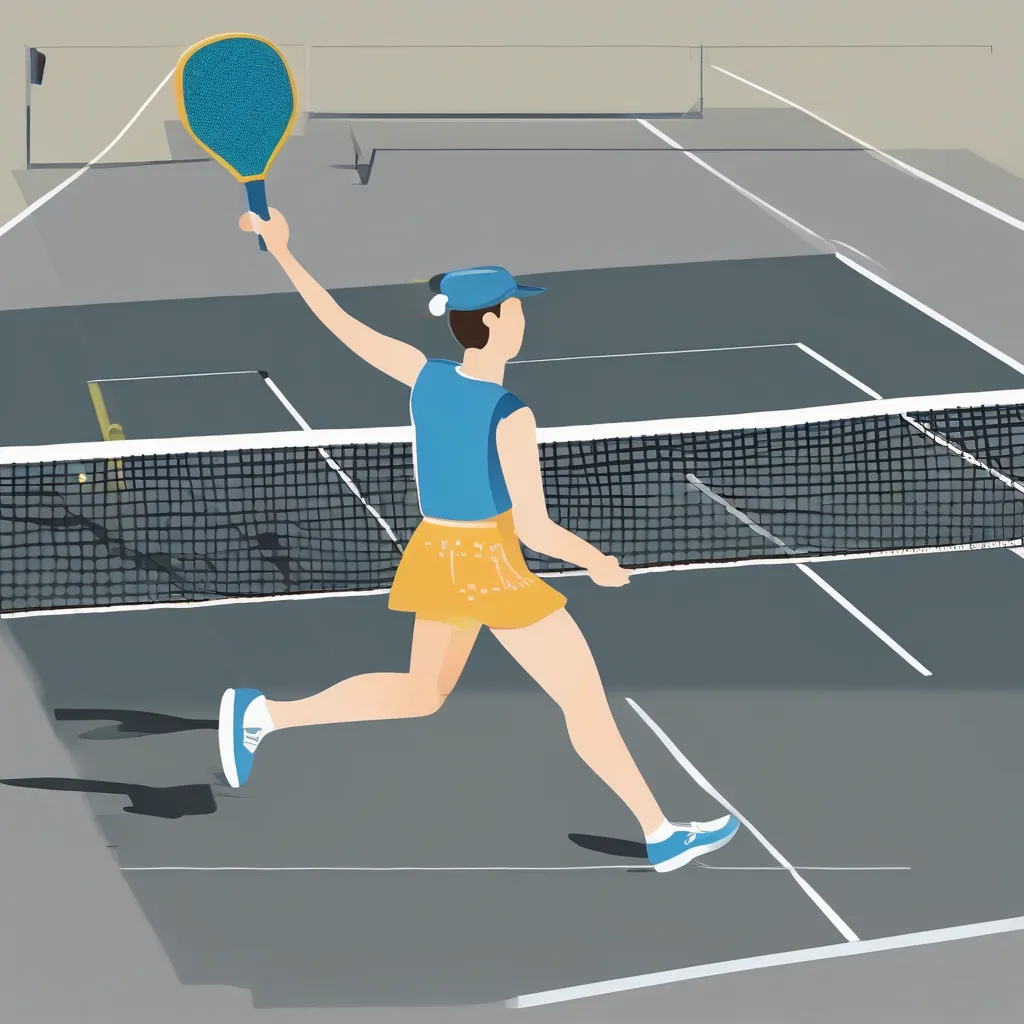Table of Contents
Introduction to Pickleball Terminology
Understanding pickleball terminology is essential for both new and experienced players. Familiarity with the game’s language helps you communicate effectively with other players, understand strategies, and improve your performance. This comprehensive guide covers key pickleball terms and phrases to enhance your knowledge of the game.
Basic Pickleball Terminology
1. Serve
The serve is the starting shot of each point. The server must hit the ball underhand and diagonally cross-court into the opponent’s service area.
 Pickleball Serve
Pickleball Serve
2. Volley
A volley is a shot that is hit before the ball bounces on the ground. Volleys are typically executed near the net to maintain an offensive position.
3. Dink
A dink is a soft shot that lands in the opponent’s non-volley zone, also known as the kitchen. Dinks are used to control the pace of the game and create opportunities for winning points.
4. Non-Volley Zone (Kitchen)
The non-volley zone, or kitchen, is a 7-foot area on either side of the net where players are not allowed to volley the ball. This rule prevents aggressive net play and promotes longer rallies.
5. Fault
A fault is a rule violation that results in the loss of the rally or point. Common faults include hitting the ball out of bounds, failing to clear the net, and volleying in the non-volley zone.
6. Rally
7. Let
A let is a serve that touches the net but lands in the correct service area. When a let occurs, the serve is replayed without penalty.
Advanced Pickleball Terminology
1. Third Shot Drop
The third shot drop is a strategic soft shot intended to land in the opponent’s non-volley zone. This shot helps players transition to the net and gain control of the point.
2. Lob
A lob is a high, arching shot that travels deep into the opponent’s court. Lobs are used to push opponents back and create space for offensive play.
3. Poach
Poaching occurs in doubles when a player crosses into their partner’s side of the court to intercept and hit a ball. Poaching can surprise opponents and gain an advantage.
4. Cross-Court
A cross-court shot travels diagonally from one side of the court to the opposite side. Cross-court shots are effective for moving opponents and creating openings.
5. Down-the-Line
A down-the-line shot travels parallel to the sideline. This shot is useful for targeting the open space along the opponent’s baseline.
6. Erne
The Erne is a shot executed by a player who positions themselves outside the sideline and close to the net, hitting the ball before it bounces in the non-volley zone. This advanced shot can catch opponents off guard.
7. ATP (Around The Post)
An ATP shot is hit around the net post rather than over the net. This shot is typically executed when the ball is angled wide off the court, allowing players to hit a surprising winner.
Common Strategies and Techniques
1. Stacking
Stacking is a doubles strategy where partners switch sides after the serve to maintain their preferred positions. This tactic is used to optimize player strengths and court coverage.
2. Split-Step
The split-step is a quick, balanced hop performed just before the opponent hits the ball. This technique helps players react faster and move more efficiently.
3. Drop Shot
A drop shot is a soft, delicate shot that barely clears the net and lands in the opponent’s non-volley zone. Drop shots are used to force opponents to move forward and disrupt their positioning.
4. Drive
A drive is a powerful, low shot aimed at the opponent’s baseline. Drives are used to apply pressure and create opportunities for winning points.
5. Block
A block is a defensive shot used to absorb the opponent’s power and return the ball softly into the non-volley zone. Blocking is effective for neutralizing aggressive shots.
Resources for Further Learning
For more detailed information on pickleball terminology, explore these valuable resources:
- Visit the USA Pickleball Association (USAPA) for comprehensive guides and tips.
- Explore instructional videos and articles on Pickleball Central.
- Check out detailed reviews and tutorials on Pickleball Portal.
- Learn from top players and coaches on PickleballMAX.
Conclusion
Mastering pickleball terminology is essential for improving your game and communicating effectively on the court. By familiarizing yourself with these key terms and phrases, you’ll gain a deeper understanding of the strategies and techniques that define pickleball. Use this guide to enhance your knowledge and enjoy the game to its fullest.
Frequently Asked Questions
- Why is understanding pickleball terminology important? Understanding pickleball terminology helps players communicate effectively, understand strategies, and improve their overall gameplay.
- What is a “dink” in pickleball? A dink is a soft shot that lands in the opponent’s non-volley zone, used to control the pace of the game and create scoring opportunities.
- How does the non-volley zone (kitchen) rule work? Players are not allowed to volley the ball while standing in the non-volley zone, promoting longer rallies and strategic play.
- What is the difference between a cross-court and down-the-line shot? A cross-court shot travels diagonally across the court, while a down-the-line shot travels parallel to the sideline.
- Where can I find more information on pickleball terminology? Visit the USA Pickleball Association, Pickleball Central, Pickleball Portal, and PickleballMAX websites for comprehensive guides and tips.